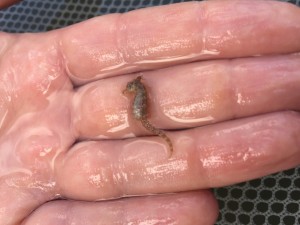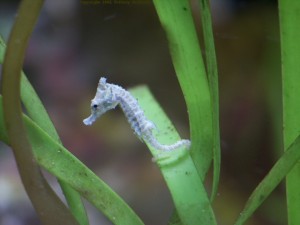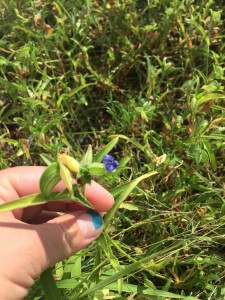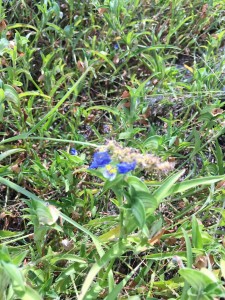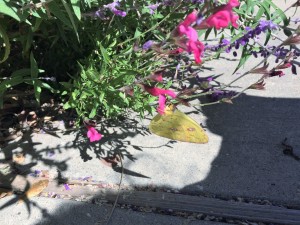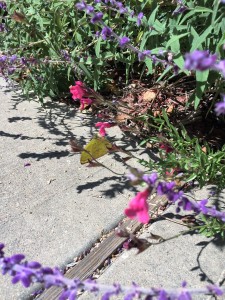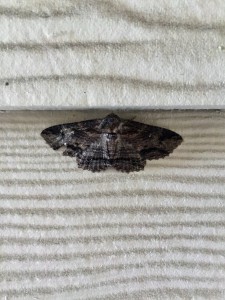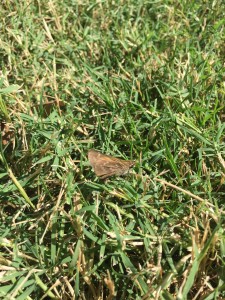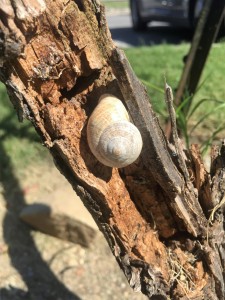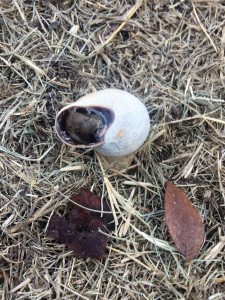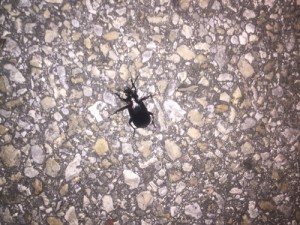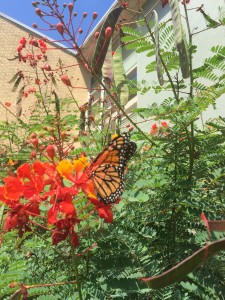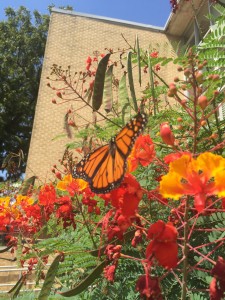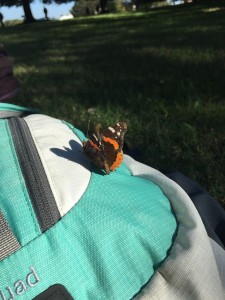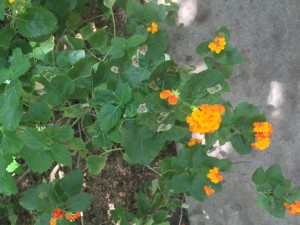As my final post, I have saved my most exciting observation for last, our exciting seahorse sighting. My research group and I caught this Dwarf Seahorse (or pygmy seahorse), Hippocampus zosterae, on our October data collection trip. Our advisor, Dr. Haynes, was with us to confirm the id in the field. It was the only seahorse we caught in all three of our trips. We had an army of freshmen on this trip to assist us with our field work and one of those freshmen spotted this tiny seahorse camouflaged among the algae in one of our seine hauls. They are only about 2 to 2.5 cm. long (max reported sighting was 5 cm. long) and look just like the algae that we catch in our seine.
The dwarf seahorse inhabits shallow tropical waters in seagrass beds, eelgrass, coral reefs, floating vegetation, and mangrove roots. It is found in the Gulf of Mexico, Caribbean Sea, and the Atlantic Ocean of the southeastern US. They have been observed to be monogamous and the male carries the eggs in a brood pouch found under the tail. They are sexually dimorphic; males are longer bodies and tails and females have longer trunks. Their common colors are beige, yellow, green, and black, and can have white speckles or dark spots. They eat living prey such as amphipods, small shrimp, and other small invertebrates. Predators of these seahorses include tunas, dorados, skates and rays, penguins, crabs, water birds, and humans.
Most recent estimates show that the dwarf seahorse is in decline. Much of its habitat is being degraded and lost through human impact, and it is continuing to be collected for the aquarium trade. in 2000, it was listed as vulnerable on the IUCN Red List of Threatened Species.
My iNaturalist post can be found here.
Sources:
http://animaldiversity.org/accounts/Hippocampus_zosterae/
http://www.fishbase.org/summary/3286
http://www.biologicaldiversity.org/species/fish/dwarf_seahorse/
Second picture: http://animaldiversity.org/accounts/Hippocampus_zosterae/pictures/collections/contributors/jeffrey_jeffords/fish/seahorse7/
